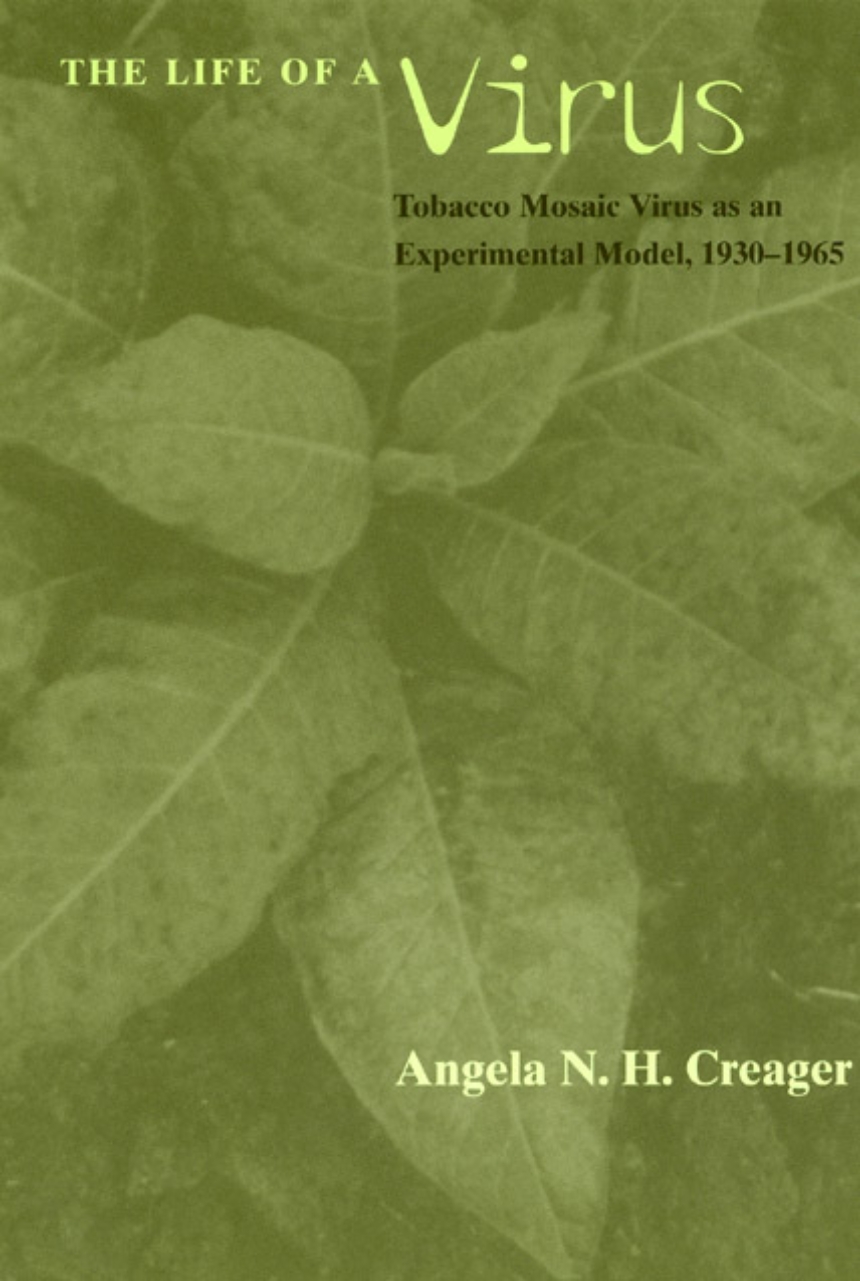The Life of a Virus
Tobacco Mosaic Virus as an Experimental Model, 1930-1965
9780226120263
9780226120256
The Life of a Virus
Tobacco Mosaic Virus as an Experimental Model, 1930-1965
We normally think of viruses in terms of the devastating diseases they cause, from smallpox to AIDS. But in The Life of a Virus, Angela N. H. Creager introduces us to a plant virus that has taught us much of what we know about all viruses, including the lethal ones, and that also played a crucial role in the development of molecular biology.
Focusing on the tobacco mosaic virus (TMV) research conducted in Nobel laureate Wendell Stanley’s lab, Creager argues that TMV served as a model system for virology and molecular biology, much as the fruit fly and laboratory mouse have for genetics and cancer research. She examines how the experimental techniques and instruments Stanley and his colleagues developed for studying TMV were generalized not just to other labs working on TMV, but also to research on other diseases such as poliomyelitis and influenza and to studies of genes and cell organelles. The great success of research on TMV also helped justify increased spending on biomedical research in the postwar years (partly through the National Foundation for Infantile Paralysis’s March of Dimes)—a funding priority that has continued to this day.
Focusing on the tobacco mosaic virus (TMV) research conducted in Nobel laureate Wendell Stanley’s lab, Creager argues that TMV served as a model system for virology and molecular biology, much as the fruit fly and laboratory mouse have for genetics and cancer research. She examines how the experimental techniques and instruments Stanley and his colleagues developed for studying TMV were generalized not just to other labs working on TMV, but also to research on other diseases such as poliomyelitis and influenza and to studies of genes and cell organelles. The great success of research on TMV also helped justify increased spending on biomedical research in the postwar years (partly through the National Foundation for Infantile Paralysis’s March of Dimes)—a funding priority that has continued to this day.
352 pages | 30 halftones, 31 line drawings, 3 tables | 6 x 9 | © 2001
Biological Sciences: Microbiology
History: American History
Table of Contents
Preface
List of Abbreviations
1. "Where Tobacco Mosaic Has Led Us"
2. Viruses Enter the Laboratory
3. Crystals at the "Threshold of Life"
4. That "Whirligig of Science": The Ultracentrifuge in Virus Research
5. The War against Polio
6. Viruses and Genes: Phage and TMV as Models
7. Taking TMV to Pieces
8. TMV as an Experimental Model
Bibliography
Index
List of Abbreviations
1. "Where Tobacco Mosaic Has Led Us"
2. Viruses Enter the Laboratory
3. Crystals at the "Threshold of Life"
4. That "Whirligig of Science": The Ultracentrifuge in Virus Research
5. The War against Polio
6. Viruses and Genes: Phage and TMV as Models
7. Taking TMV to Pieces
8. TMV as an Experimental Model
Bibliography
Index
